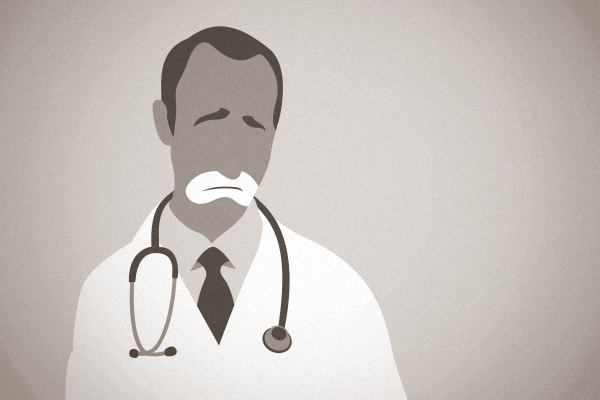Dr. Brian McDonough, Medical Editor of CBS Philadelphia, made a sad recommendation when he said, “Next time you see your doctor you might want to ask if he or she is happy.” Ouch. According to a study last year, 42% of docs admit they are ‘dissatisfied’ or ‘very dissatisfied’ in their medical practices, and 59% say they are unlikely to encourage a young person to go into medicine (talk about exacerbating the doctor shortage). Compare that with only 16% of physicians reporting a generally favorable outlook about their career future. According to the survey, doctors who own a practice, are locum tenens physicians, or are employees of a practice owned by a hospital or health system are more likely to be unhappy. But wait, isn’t that subset of doctors just those who are working with red tape? Compare the above survey with this analysis from the Direct Primary Care Coalition. Note their distinction between Primary Care and Specialist/Hospital Care:
- Primary Care: Frequent, highly predictable, readily affordable, to be encouraged
- Specialist/Hospital Care: Rare, difficult to predict, very expensive, to be avoided
Also, note that insurance is a component of specialist and hospital care. Just like car insurance, health insurance was originally created to pay for expensive and unlikely problems. We’re cash-only doctors, but insurance is essential because there are events in life that are catastrophic and costly. That’s the reality. However, inventive marketing and cunning business has blindsided us. Red tape infiltrated our collective perception and became the status quo. The DPCC presents it as a psychological cholesterol, a force of coagulation in direct opposition to what pop psychology would call Flow*. Flow is understood to be a state where a person (i.e. a doctor) performs an activity and is fully immersed in their task. This “energized” focus consists of “full involvement” that enables more complete enjoyment in the activity (i.e. treating patients). This idea of complete absorption was proposed by Mihály Csíkszentmihályi and has been widely referenced across a variety of fields. Why would we exclude it from the reality of primary care, or even healthcare in general? Red tape is an interruptive force. Isn’t it natural that those who want to find happiness in their work would seek to circumvent it? Speaking of focus, DPCC believes, as do we, that primary care should be relatively frequent. Direct care’s subscription model encourages this type of behavior. It’s like having a gym membership — knowing that you’re paying by the month makes it worthwhile to take advantage of what’s immediately accessible. In our case, it can be communicating with doctor via text with regards to a sick child, or coming in for stitches after a nasty cut. The DPCC takes it a step further, saying,
“It doesn’t make sense to pay for primary care using insurance. Paying for primary care with insurance has caused the cost of primary care and the downstream specialist/hospital care to rise considerably, and has made healthcare cost-prohibitive for millions of Americans.”
But direct care practices eliminate insurance overhead. These lower costs can equate to increased access to healthcare for more Americans. The DPCC includes visuals to help explain how this occurs. Let’s take a look at insuance-based vs. membership-based care of treating a pneumonia case.
Efficiency equates to lower costs. It also means that doctors spend more time with patients and less time with insurance forms. And, in line with the concept of flow, it can lead to increased happiness. Something that needs to happen. The DPCC admits,
“Whereas 50 percent of medical students once chose primary care as a profession, that percentage is now in the single digits. This migration is fueled by growing dissatisfaction with the insurance-laden business models in primary care that make specialization options more attractive, due to less paperwork and increased income.”
In the fee-for-service world, the average primary care office visit is 7-15 minutes. It requires seeing 25 – 35 patients per day to sustain a traditional clinical practice. That means providers must manage 2,500 – 3,500 regular patients. We hear stories of doctors staying to transcribe notes for 3 hours every night, just to adhere to ICD-9 standards. Is it any wonder that docs would be happier practicing direct care? Yes, happiness is a matter of perception. But hopefully as more patients opt for the direct care flow, more docs will realize Dr. Csíkszentmihályi’s theorized happiness. Images courtesy of dpcare.org


